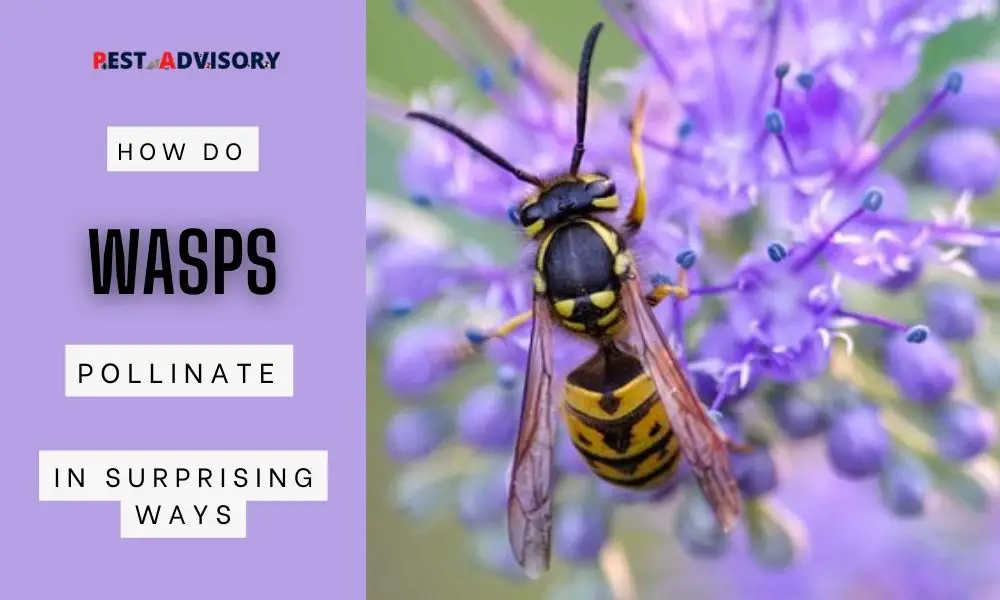In the intricate tapestry of pollination, bees often steal the spotlight, but there’s an intriguing secret waiting to be unveiled: the remarkable role of wasps as pollinators.
Beyond their reputation as pests, wasps possess surprising pollination powers that contribute to the delicate balance of ecosystems.
From their unique behaviors to their fascinating morphological adaptations, this article delves into the captivating world of how wasps pollinate in extraordinary ways, shedding light on their often-overlooked ecological significance.
Important Note: If you're tired of pests and want a reliable solution, then you should definitely consider seeking help from a professional pest control company. DIY solutions can be effective, but if you're dealing with a significant pest infestation, you don't want to rely solely on DIY methods. Pest control companies typically don't charge huge fees. You can fill out this form to receive free quotes from the top local pest control companies, and compare the quotes and see for yourself. Then, finally, your pest problems will be eliminated for good.
Do wasps pollinate?
Yes, wasps can be effective pollinators for some plant species. While most wasp species do not play a role in pollination, a few can transport pollen and pollinate various plants, including the fig tree. Wasps belong to the same insect order as bees and ants.
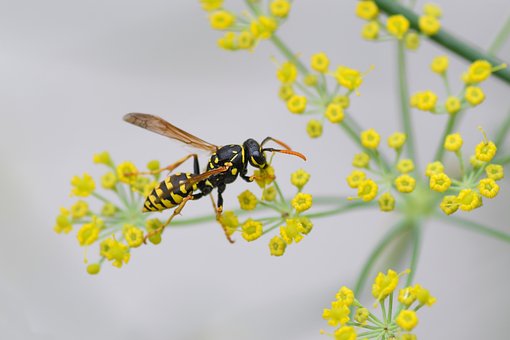
The Role of Wasps as Pollinators
Wasps’ Role as Pollinators
Wasps play a crucial role in the process of pollination, contributing significantly to the reproduction and survival of numerous plant species.
While bees are commonly recognized as primary pollinators, wasps offer valuable supplementary pollination services.
As they forage for food, wasps inadvertently pick up and transfer pollen from flower to flower, aiding in the fertilization and production of seeds.
Their role as pollinators helps maintain biodiversity and the health of ecosystems.
Diversity of Wasp Species Involved in Pollination
The world of wasps encompasses a wide array of species, and many of them actively participate in pollination.
Various wasp families and subfamilies, such as paper wasps (Polistinae), solitary wasps (Sphecidae), and potter wasps (Vespidae: Eumeninae), contribute to the pollination process.
This diverse range of wasp species ensures the pollination of a broad spectrum of plants, including trees, shrubs, and flowering herbs.
Examples of Specific Wasp Species and Their Pollination Activities
Fig Wasps
Fig wasps (family Agaonidae) exhibit a fascinating mutualistic relationship with fig trees.
Female fig wasps carry pollen from male flowers to female flowers, allowing for the fertilization of the figs.
In return, the wasps find a safe haven to lay their eggs within the figs, ensuring the survival of both the wasps and the fig tree.
Mason Wasps
Mason wasps (family Sphecidae) contribute to the pollination of various flowering plants by transferring pollen while searching for nectar and prey.
These solitary wasps construct nests using mud or other materials, provisioning them with paralyzed insects to serve as food for their larvae.
In the process, they inadvertently carry pollen from flower to flower, aiding in pollination.
Orchid Pollinators
Certain wasp species have evolved unique relationships with orchids.
For example, the female orchid dupe wasp (Lissopimpla excelsa) is enticed by the scent and appearance of the orchid flower, mistaking it for a potential mate.
As the wasp attempts to mate with the flower, it comes into contact with the flower’s pollen, facilitating pollination.
Sweat Bees
While not true wasps, sweat bees (family Halictidae) share similarities in their appearance and behavior.
They are essential pollinators, and some species, like the European sweat bee (Halictus scabiosae), play a role in pollinating a variety of plants, including sunflowers, herbs, and fruits.
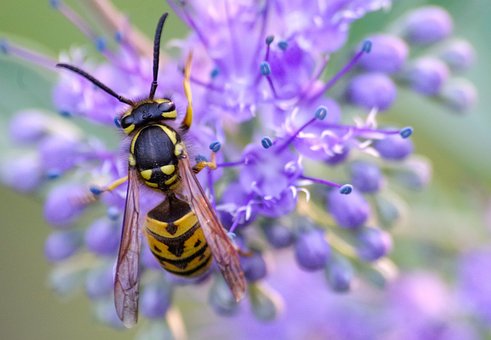
How do Wasps Pollinate?
Wasps, often overshadowed by bees when it comes to pollination, have their own unique ways of contributing to the reproductive success of plants.
While they are primarily known for their predatory behavior and role as pest controllers, wasps inadvertently participate in pollination as they forage for food.
Let’s explore how wasps pollinate and the mechanisms involved in this process.
Foraging Behavior
Wasps are opportunistic foragers, seeking out various food sources, including nectar, fruits, and insects.
As they visit flowers in search of nectar or prey, their bodies come into contact with the reproductive structures of the flowers, leading to the transfer of pollen.
This accidental contact plays a crucial role in pollination.
Physical Characteristics
The physical characteristics of wasps contribute to their pollination abilities.
They possess hairy bodies, much like bees, which allows pollen grains to adhere to their bodies as they brush against the anthers (male parts) of flowers.
These pollen-laden wasps then inadvertently transfer the pollen to the stigma (female part) of other flowers during subsequent visits.
Flower Visitation Patterns
Wasps tend to have specific flower visitation patterns, which vary among different species.
Some species are attracted to brightly colored flowers, while others are drawn to specific scents.
The visual cues and scents guide wasps to suitable flowers for foraging, increasing the likelihood of effective pollination.
Morphological Adaptations
Wasps possess morphological adaptations that aid in pollination.
For instance, their mouthparts, including their mandibles and proboscis, are well-suited for accessing nectar within flowers.
The elongated proboscis enables them to reach deep into tubular flowers, allowing them to access nectar and inadvertently brush against reproductive structures.
Plant Specific Relationships
Certain wasp species have developed unique relationships with specific plants.
An example is the fig wasp, which has a mutually beneficial association with fig trees.
Female fig wasps enter fig flowers to lay their eggs, inadvertently carrying pollen from male flowers to female flowers during this process.
This pollination activity ensures the fertilization of the figs, while the wasps find a suitable environment for their offspring.
Complementary Pollination
Wasps complement the pollination activities of bees and other insects.
While bees are often more efficient pollinators due to their hairy bodies and specialized pollen-carrying structures, wasps provide additional pollination services.
Their different foraging preferences, flower visitation patterns, and behaviors help ensure the pollination of a broader range of plant species, contributing to overall ecosystem health and biodiversity.
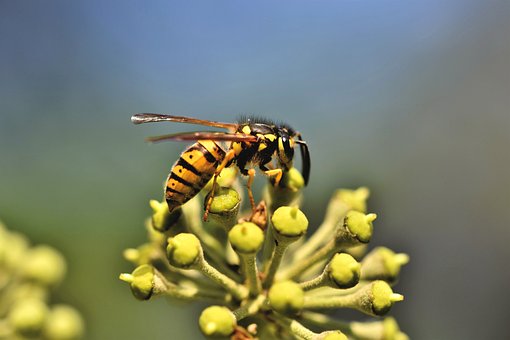
Comparing Wasps to Bees as Pollinators
Differentiating Characteristics and Behaviors of Wasps and Bees:
Appearance
Wasps and bees share similarities in their appearance, such as their characteristic black and yellow coloration. However, wasps often have a slender and elongated body shape, while bees tend to be more robust and hairy.
Diet and Foraging Behavior
Bees are herbivores, relying primarily on pollen and nectar as their food sources.
They are specialized pollen collectors, equipped with specialized structures such as pollen baskets on their hind legs.
In contrast, wasps have a more varied diet, which includes not only nectar and pollen but also eats insects and other food sources.
Wasps are opportunistic foragers, searching for prey and scavenging for different food resources.
Social Structure
Bees are known for their intricate social structure, with colonies consisting of a queen, female workers, and male drones. They exhibit complex communication and division of labor.
In contrast, most wasp species are solitary, with females building nests and raising offspring on their own.
However, some wasp species, like paper wasps and yellow jackets, exhibit social behavior and live in colonies.
Highlighting the Complementary Roles of Wasps and Bees in Pollination
Flower Preferences
Wasps and bees have different flower preferences due to their specific feeding behaviors.
Bees are more attracted to brightly colored flowers and are especially effective in pollinating flowers with long, tubular shapes.
Wasps, on the other hand, are often attracted to flowers that offer abundant nectar and those with simpler structures.
Pollen Transfer
Bees have specialized body structures, such as branched hairs and pollen baskets, which enable them to efficiently collect and carry large quantities of pollen.
They are known for their thorough grooming behaviors, ensuring pollen is transferred between flowers.
Wasps, with their hairy bodies, inadvertently carry pollen as they move from flower to flower while foraging.
Complementary Pollination Services
While bees are considered the primary and most efficient pollinators due to their pollen-collecting adaptations, wasps provide supplementary pollination services.
Their different foraging behaviors, flower preferences, and body structures ensure the pollination of a wide range of plant species.
In some cases, certain plants may rely on wasps as their primary pollinators due to specific ecological adaptations.
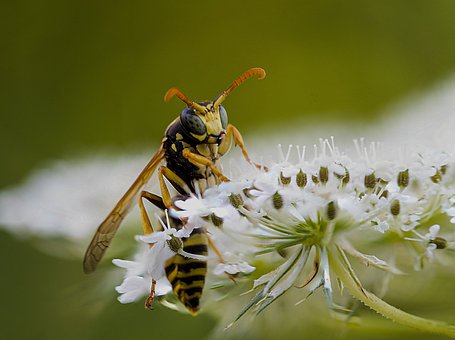
Understanding the Significance of Wasps’ Pollination Services in the Absence of Bees
Ecosystem Resilience
In the face of declining bee populations and pollinator diversity, recognizing the significance of wasps’ pollination services becomes crucial.
Wasps can potentially fill in the gaps left by declining bee populations, contributing to the resilience of ecosystems by ensuring the pollination of various plant species.
Plant Diversity
Wasps and bees have different preferences when it comes to flower selection.
The presence of wasps as pollinators expands the diversity of plants that can be effectively pollinated.
This diversity is essential for maintaining healthy ecosystems, as different plants provide food and habitats for a variety of animals.
Reproductive Success
Wasps play a vital role in the reproduction and survival of many plant species.
Their accidental pollen transfer during foraging activities helps facilitate fertilization, seed production, and the overall genetic diversity of plant populations.
Frequently Asked Questions
Do wasps pollinate flowers?
Yes, wasps can pollinate flowers. While they are not as efficient as bees, wasps can transport pollen from one flower to another while feeding on nectar.
Some plant species, such as orchids, actually require wasps for pollination. So, wasps can be beneficial pollinators for certain flowers and plants.
Do paper wasps pollinate?
Paper wasps are not considered to be important pollinators because they do not have the same body structures as bees that allow them to carry and distribute pollen effectively.
While they do feed on nectar and occasionally collect pollen, they are not efficient pollinators.
So, paper wasps may accidentally pollinate some flowers, but they are not significant contributors to pollination.
Do yellow jacket wasps pollinate?
Yellow jacket wasps are known to be beneficial pollinators of flowers.
While they primarily feed on other insects and their larvae, they also collect nectar and pollen from flowers.
When foraging for nectar, yellow jackets may inadvertently transfer pollen from one flower to another, which helps in pollination.
So, yellow jacket wasps do have a role in pollination and can be considered beneficial insects for gardens and ecosystems.
Do wasps pollinate as much as bees?
No, wasps do not pollinate as much as bees.
Bees have specialized structures on their bodies that allow them to carry more pollen effectively, and they are also more efficient at transferring pollen from one flower to another.
While some wasp species can be effective pollinators for certain plants, they are generally less efficient than bees in pollination.
So, bees are still considered to be the most important insect pollinators for most flowering plants and crops.
How do wasps pollinate figs?
Figs have an obligate mutualism with tiny fig-pollinating wasps, which means that they rely on each other for reproduction.
When a fig is ready to be pollinated, it emits a scent that is attractive only to the specific species of wasp that pollinates that type of fig.
The female wasp enters the fig through a small opening on the end and pollinates the flowers inside while laying her eggs.
The eggs hatch into larvae, which feed on the fig’s internal tissues. Once the wasp’s larvae mature, the male wasps help the females to leave the fig and seek out another fig tree for pollination.
So, the fig and the wasp have evolved a mutually beneficial relationship in which the wasp helps to pollinate the fig, and the fig provides food and shelter for the wasp’s larvae.
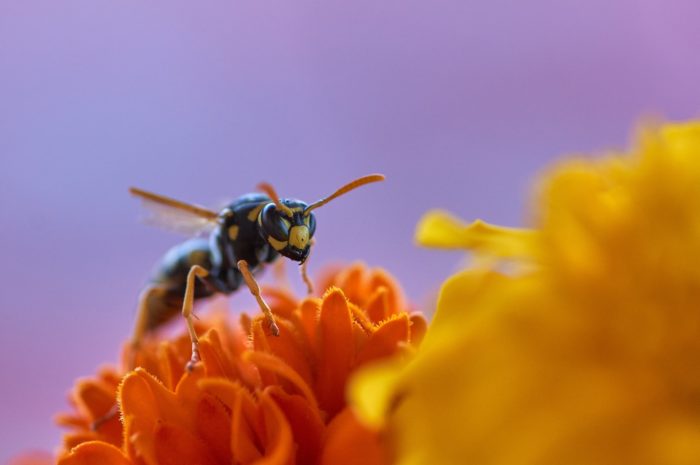
Conclusion
The remarkable role of wasps as pollinators cannot be underestimated.
While bees often steal the spotlight, these industrious insects quietly contribute to plant reproduction and ecosystem resilience.
Recognizing and protecting wasps as vital pollinators is essential for the conservation of biodiversity.
Let us embark on a journey of exploration and conservation, shedding light on the captivating world of wasp pollination and ensuring the survival of these unsung heroes of our natural world.
After knowing about wasps’ role as a pollinator am sure you might be interested to learn more about the what is the purpose of wasps in our ecosystem and why they are important to us.
Keep reading and learn new things about wasps and their fascinating world.

